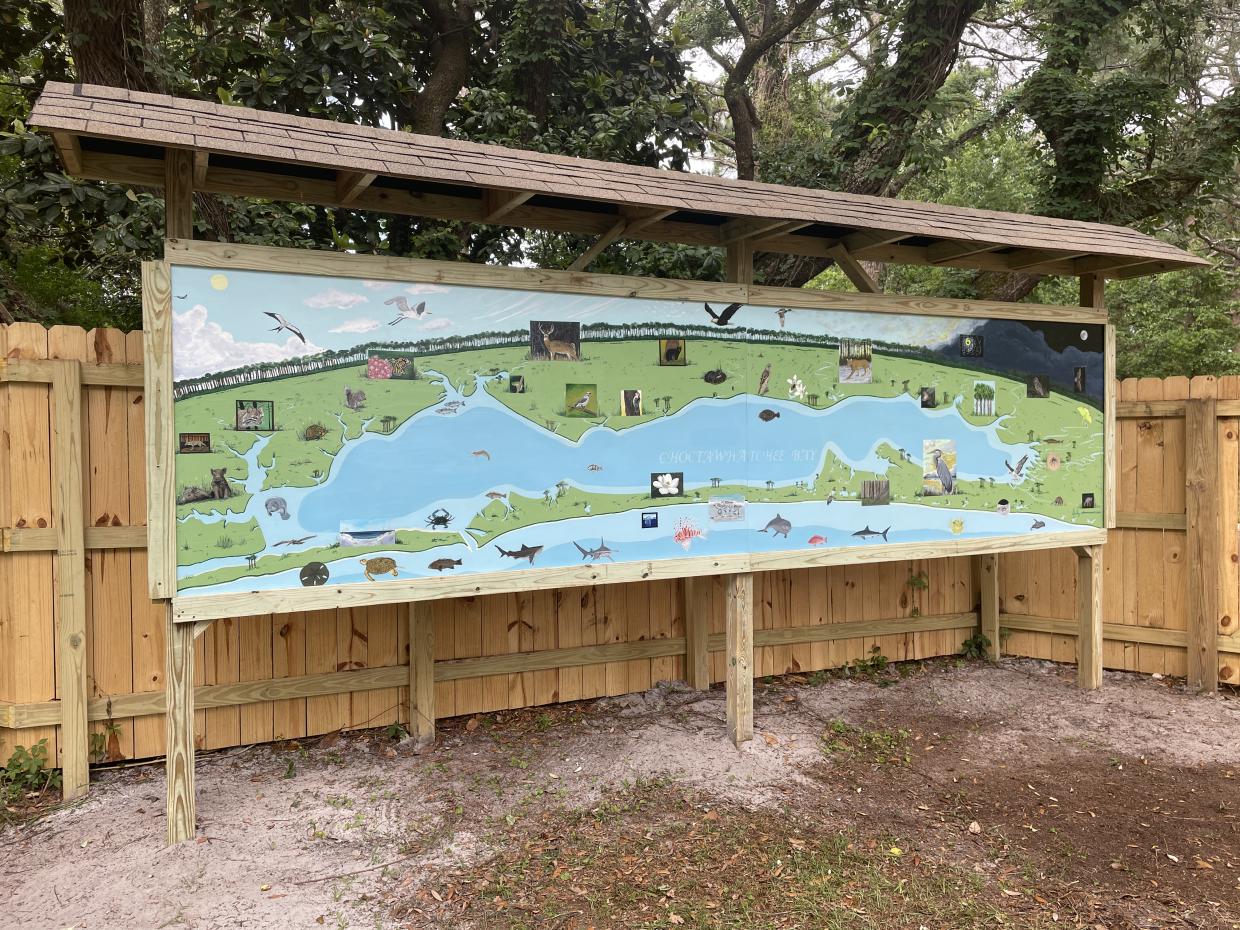
The Emerald Coast Science Center was unable to join us this past July for our online workshop: Murals and Museums - the Intersection of Art, Science, and Cultural Relevance. Nonetheless, Educator & Community Affairs Coordinator, Harley Peters, took the time to share more about an exciting project that started with the NISE Network’s Earth & Space Project-Based Professional Learning Community.
We worked with local artist and museum community partner, Andrew Wargo, to create a piece for guests to learn about the importance of the waterways in this area and how we can protect these waterways as well as the plants and animals found around them. The mural created is 16ft x 4ft and showcases the Choctawhatchee Bay in Okaloosa County. Guests can now get a closer look at some of the local plants, animals, and weather they may see when visiting the area.
In addition to the mural, a guide book is being created for guests to engage with while viewing the mural. Participants would be able to scan QR codes, each taking you to a specific topic - Insects, Reptiles, Water Quality, Sustainability, Weather, etc.)
As an example of the type of additional info available via QR code (info adapted from https://www.floridamuseum.ufl.edu/science/five-facts-bees-in-florida/):

- Common Name: Eastern Cranberry Bee
- Scientific Name: Melitta americana
- More than 300 species of bees are found in Florida, with 29 found only in the state. When you think of a bee, you may picture a fuzzy insect with black and yellow markings, but native bee species come in an assortment of shapes, sizes, and colors. Native bees range from yellow and black to lime green, bottle green, turquoise, sapphire, navy, and even midnight blue-black. They can be fuzzy or sleek with shiny metallic bodies. Some bees have noticeably fuzzy legs, while others have thick fur on their abdomens, and some have sparse hairs which act like a magnet for attracting the pollen they carry from flower to flower.
- Bees rely on pollen for nutrition. Some flowers need bees and other insects to carry pollen to other flowers for fertilization. Non-native European honeybees (Apis mellifera) have been imported because they are critical for many agricultural crops and their hives can be moved to where they are most needed. Native bees are also valuable pollinators. Some species have direct relationships with native plants, like the blue calamintha bee (Osmia calamintha), which pollinates the flowers of Ashe’s calamint (Calamintha ashei), a threatened species in Florida. Other native bee species visit a variety of flowers.
- Most Florida bees are solitary and don’t live in hives. Some solitary bees nest in the ground by digging tunnels, and others nest in hollow spaces like rotting wood, reed stems or holes made by other insects. A few Florida bee species, like the bumblebee, are social and live in colonies with a queen. These social species create colonies in abandoned animal burrows or bird nests, hollow trees, or human-created spaces.
A big thank you to our partners at the Emerald Coast Science Center for sharing back about this great work!
View a recording and other resources from the July 18, 2023 Online Workshop: Murals and Museums - the Intersection of Art, Science, and Cultural Relevance: https://nisenet.org/MuralsAndMuseums2023
Learn more and find resources to download from the NISE Network’s Earth & Space Project-Based Professional Learning Community: https://www.nisenet.org/making-relevant-inclusive
